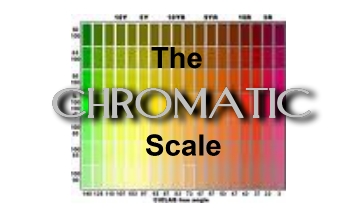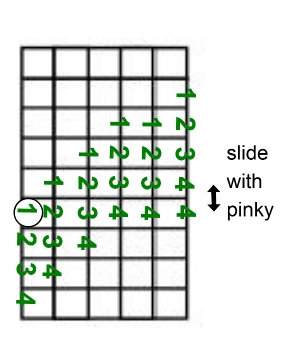Free Online Guitar Lessons

If you watched the Introduction to Notes and Notes on the Guitar videos, you’ll remember we only use 12 notes in Western Music. A Chromatic Scale uses all of these notes to produce an ascending or descending effect.

These scales are easy to visualize. We just need to play up or down from a given note making sure to hit EVERY fret on the way to the octave. Remember each fret is a Half Step, so we get a formula that looks like this:
1h2h3h4h5h6h7h8h9h10h11h12h1
* If you are still learning the note names on the neck, here is a great opportunity to practice. Say each note name as you play through the scale. Let’s start on the letter A. * Remember- when we count up or ascend, we use the sharps.

When we count down or descend, we use the flats.

But playing the chromatic scale up one string is usually impractical. We guitarists prefer to consolidate our fingerings. If we move the higher notes to other strings, we can come up with a more “compact” version of the Chromatic scale that lets us cover two octaves.



We now have the formula of a two octave Chromatic Scale reduced to a simple shape:

The letter you start on names the Chromatic scale. Since we just started the scale on A, we played an A Chromatic Scale. If you wanted to play a B Chromatic Scale, simply start the Chromatic Scale shape on the letter B.


Since there are 12 different notes that you can start this pattern on, theoretically there should be 12 different Chromatic scales. Try playing them all and practice saying the note names.
When you feel comfortable with the shape, try playing the examples on the Chromatic Scale Exercises video.








